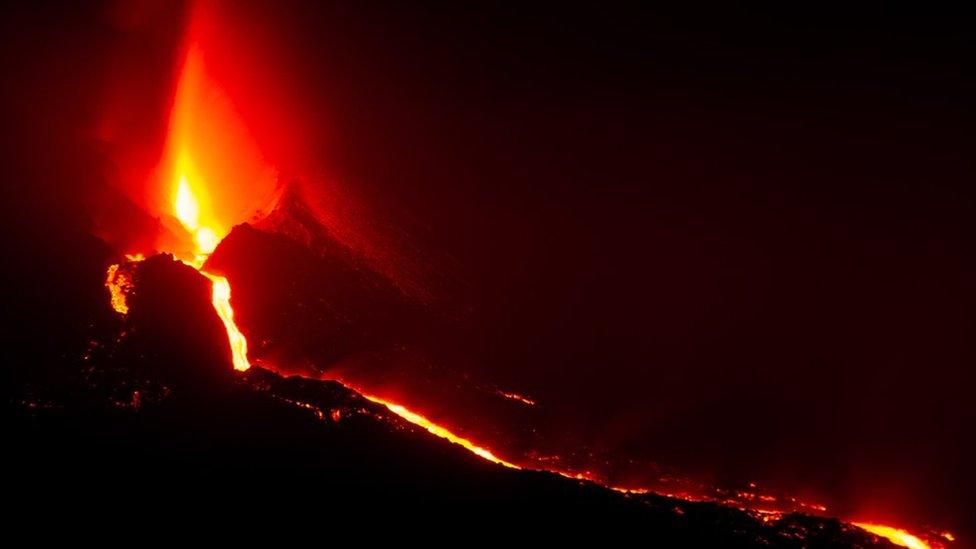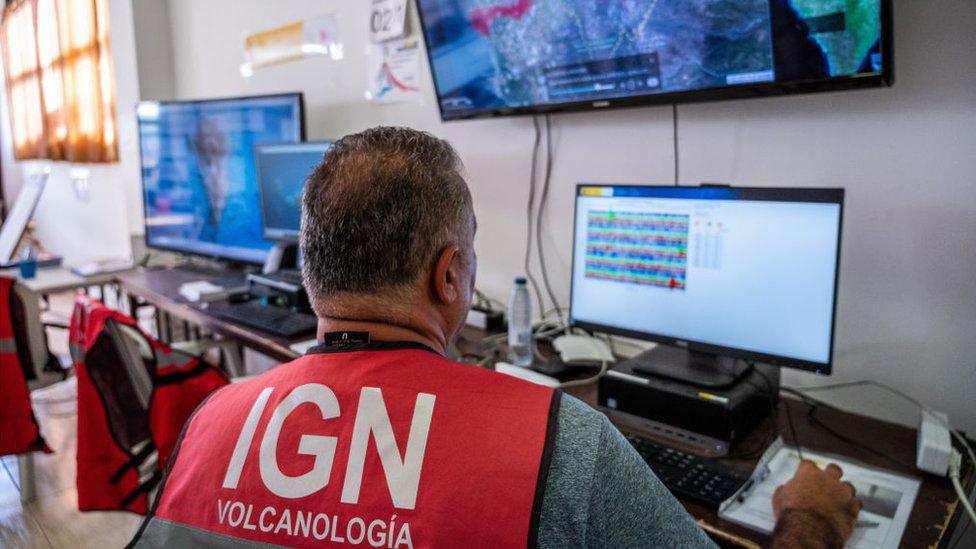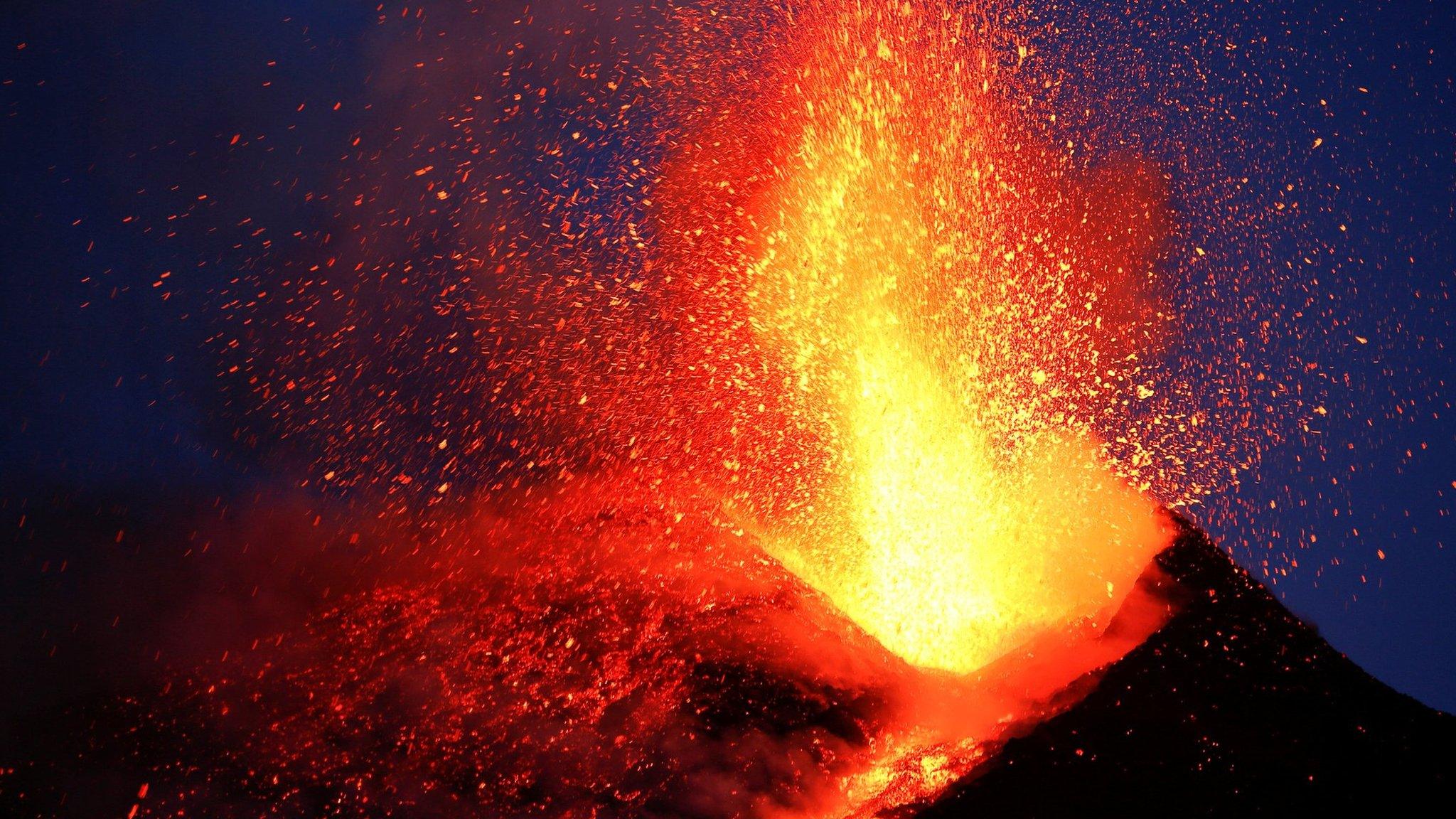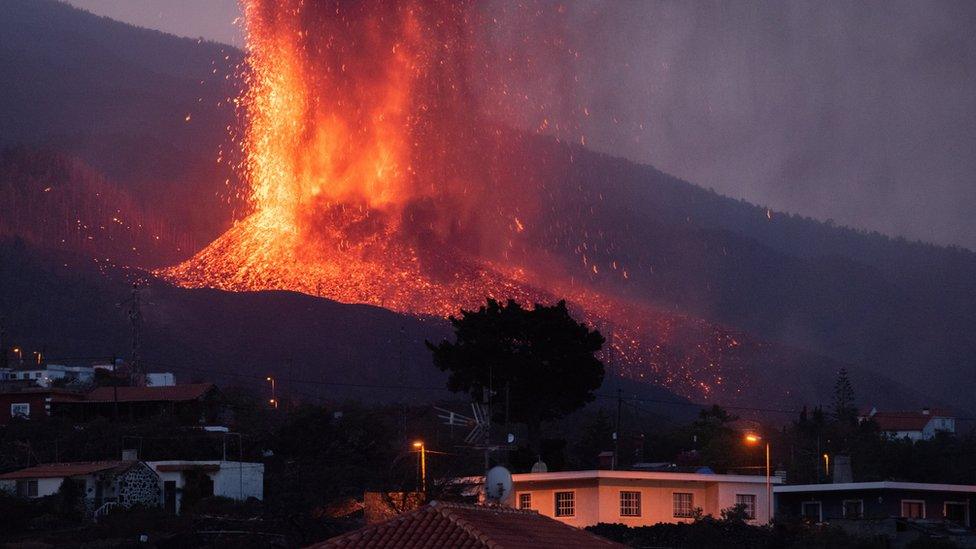La Palma volcano: A month on Cumbre Vieja shows 'no signs' of stopping
- Published
- comments

The Cumbre Vieja volcano is showing "no signs" of slowing down according to local officials.
The volcano, which is on the Canary Island of La Palma, began erupting on the 19 September, pouring out rivers of lava and huge clouds of ash.
It's destroyed almost 2,000 buildings on the island, and around 7,000 people have had to evacuate their homes to safety.
The Canary Islands president Angel Víctor Torres, said: "There are no signs that an end of the eruption is imminent even though this is the greatest desire of everyone."
"We are at the mercy of the volcano. It's the only one who can decide when this ends," he said.

Volanologists - trained proffesionals who monitor volcanos - have been keeping an eye on the volcano's activity to help warn people.
Scientists at the Spanish National Geographical Institute said they recorded more than 40 earthquake tremors over the weekend, the strongest of which was around 4.3 on the Richter scale.
The Richter scale is a system which measures how powerful earthquakes are.
Tremors are rated up to 10 with 10 being strongest.
It was developed by Charles Francis Richter and presented in 1935.
Due to a fast response from local rescue services, no serious injuries have been reported on the island, and nobody has been killed since the eruption began.
BBC reporter Dan Johnson explains the problems caused by lava from the volcano
Streams of lava have now covered more than 742 hectares (1,833 acres) of land on the island.
Local authorities are now stepping up their protective measures in the Tazacorte area as the southern lava stream is now almost 200 metres away from the sea.
Scientists are concerned about lava meeting the sea because toxic gases - which can cause eye, lung and skin irritation - may be released into the air.
The La Palma airport was closed over the weekend due to huge ash clouds from the volcano, but this has now re-opened.
- Published16 April 2021

- Published30 September 2021

- Published24 September 2021

